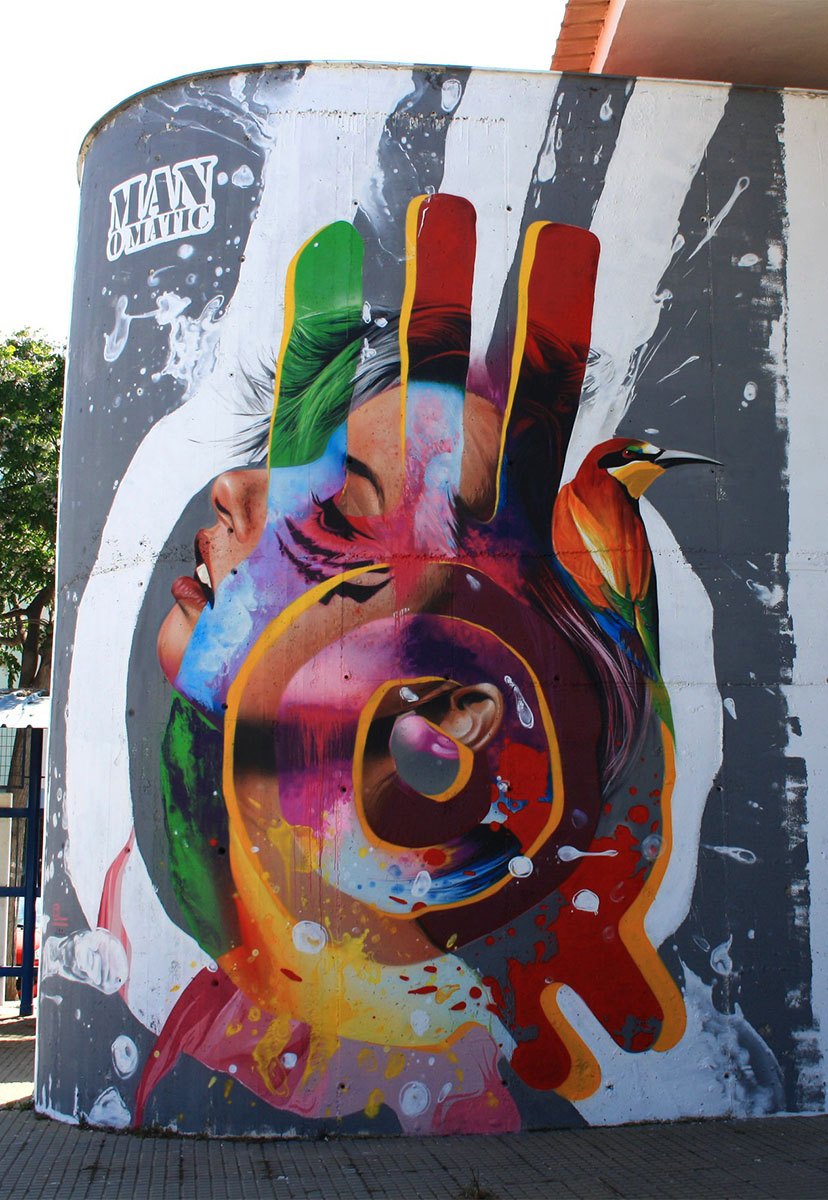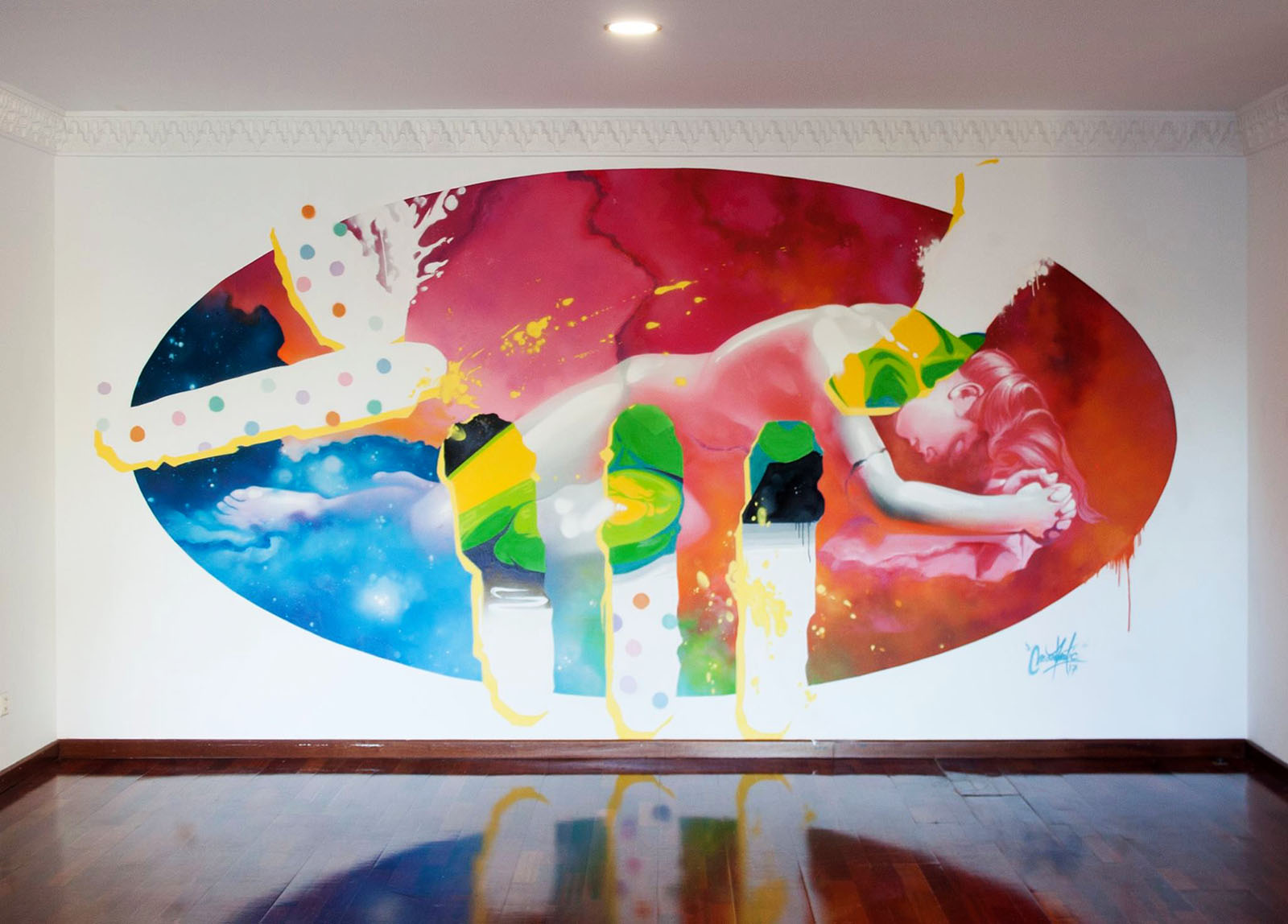Mural in Bogota, 2017
Art about Identity
An Artistic Proposal
Exploring origins through art
“Art about Identity”, the new MANOMATIC pictorial proposal arises from a visit to the archaeological site of the Dolmen de Soto in Trigueros (Huelva). From that moment, he feels a need that arises spontaneously to know about the inhabitants of this place and know more about his distant ancestors. These ancestral forms and colors have a hypnotic effect on the artist, the spaces full of signs and codes of the first communities embodied in the walls generate a moment of inspiration. After a time of reflection, MANOMATIC wonders about the culture that surrounds him, and, as anthropologists, historians and artists previously did, asks the past:
- Who are we?
- Where do we come from?
- But also inquires about our destiny, where do we go?
Migrant instincts
About whether we continue to be migrant nomads and if, as it seems evident, the idea of discovering new horizons, new cultures, perpetuating the nomadic instinct and therefore the same global spirit that characterizes us today, remains a human need; spirit that these prehistoric inhabitants already possessed and that the modern facilities provided by new technologies allow us to know through the investigation of cultures and artistic expressions, even from places far away from our own environment.
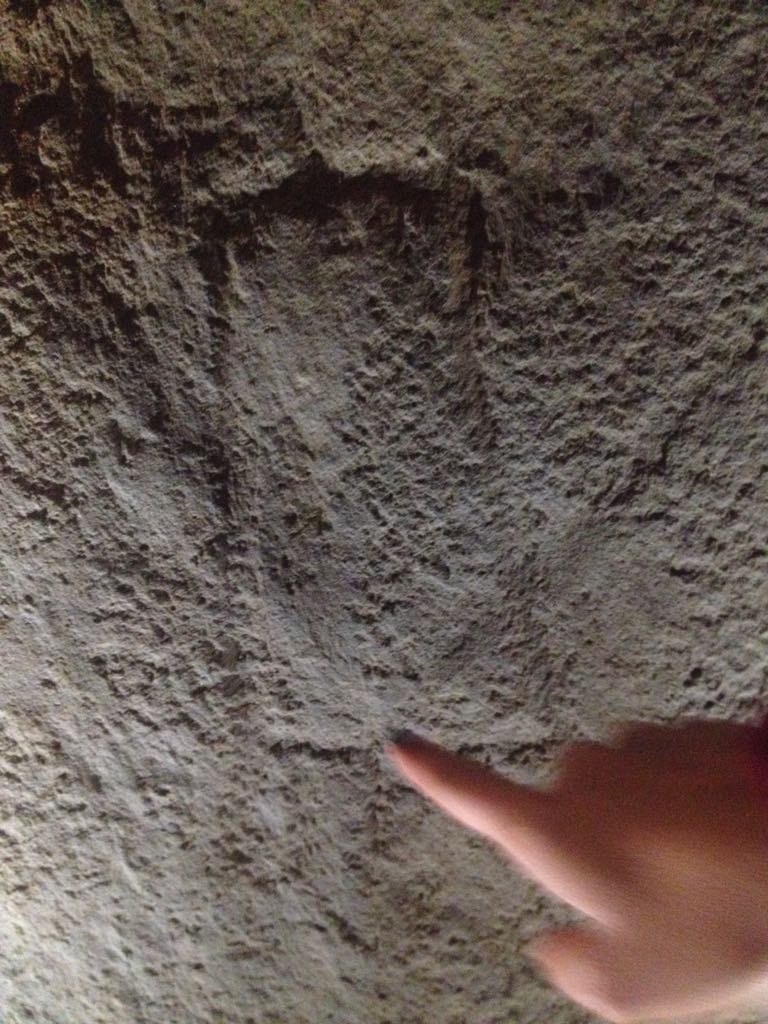
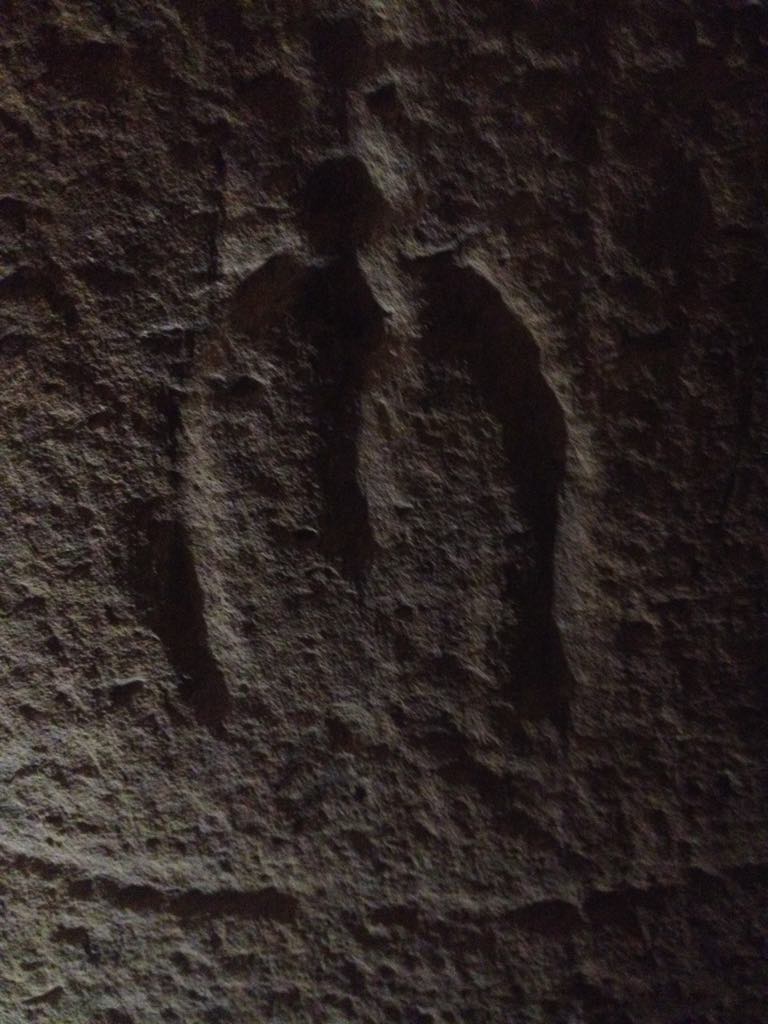
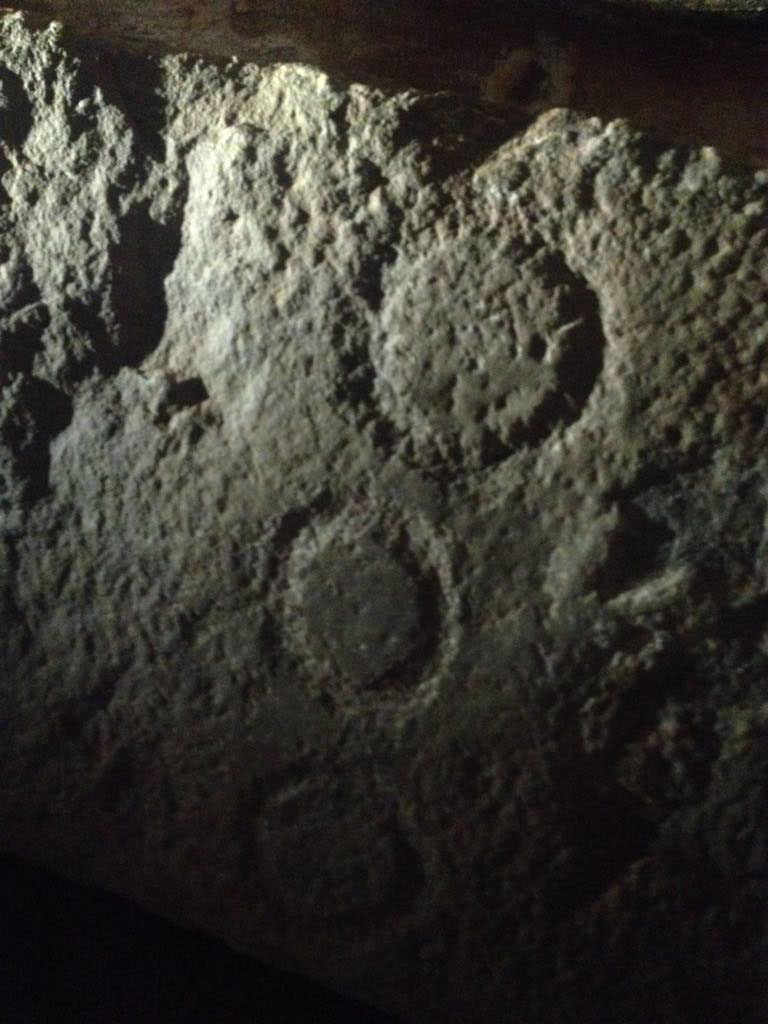

Delving into history
As a starting point, MANOMATIC considers the commitment to delve into the history of its province, asks for advice from anthropologists and scholars from these periods and especially from the areas included in the territories of the province of Huelva; people who in the past occupied southern Europe in the westernmost part of the Iberian Peninsula, particularly in the same chronological stage that corresponds to the construction of these megalithic architectural enclaves.
Knowing your roots
Huelva is a territory very rich in archaeological remains and architectural ensembles as relevant as a necropolis, burial areas with structures partially or totally excavated on the ground, where collective burials were performed. It is known that this geographical area has, from the ancient Neolithic and Middle Neolithic, agricultural communities that marked their landscapes with large stones in an isolated way or collectively transmitting messages of social and ideological value that by their conservation reach to this day.
Dolmen de Soto
The inhabitants of these producing communities belonging to the Dolmen de Soto area are believed to have developed their activity within the period called Calcolytic or Copper Age (III-IV millennium BC). These constructions such as megaliths were placed in spaces chosen for their geographical characteristics, elevations, the proximity of water tributaries such as the sea or rivers, the wealth of materials such as clays, wood, animals, vegetals, caves or for the riches in metals.
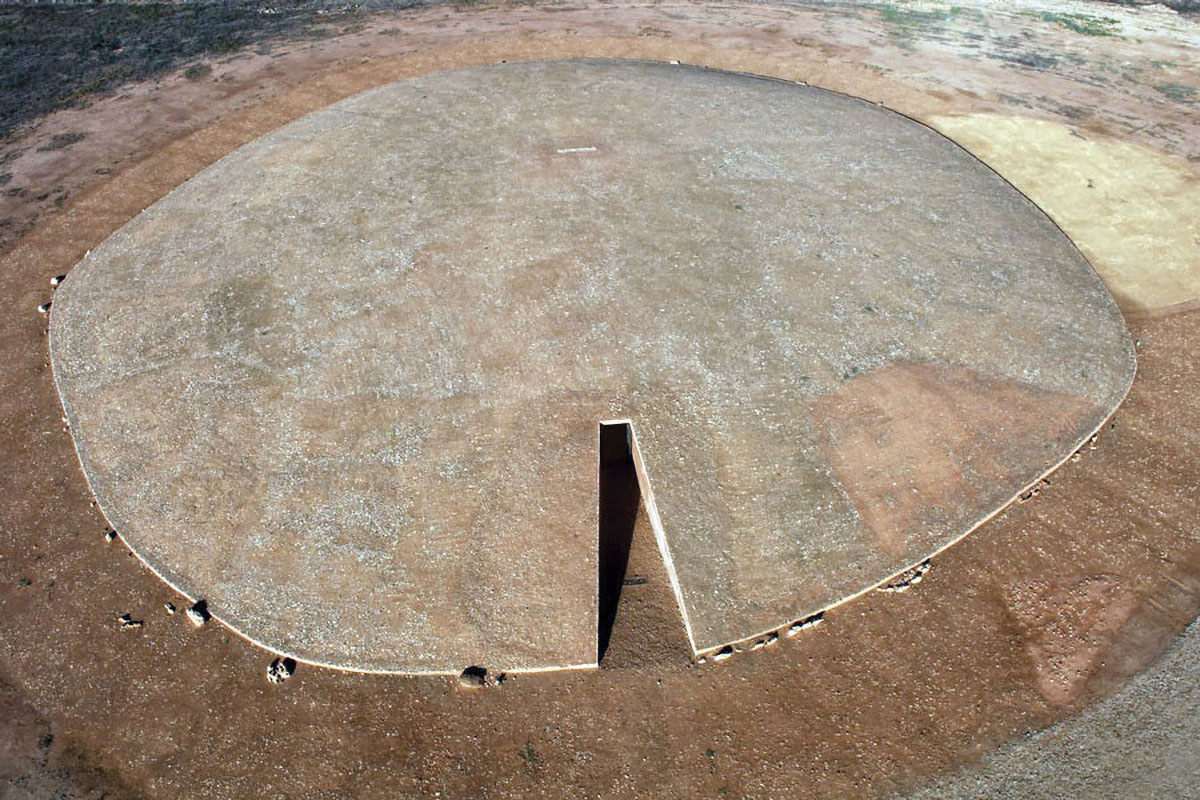
Dolmen de Soto de Trigueros
We were all migrants
The settlements of the aboriginal settlers in later stages will be perpetuated for these same reasons, generating a wide range of cultures that have passed through the southwest of the peninsular, unions and crossbreeding between migrants arriving from other parts of the world, creating a rich history of peoples and own communities that inhabited and inhabit the current Andalusia. Among the most representative is the Tartessian culture that is believed to be originated by mixing with the Phoenician culture arriving at these coasts through the sea with the aboriginal settlers who were already installed and rooted in this territory. Later on, the Greeks, the Romans, the Arabs and, in modern times, the English to reach the current inhabitants.

Identity enrichment
Another relevant issue that serves as a starting point for this artistic project is migration as a permanent habit in humans since, due to our curious nature or necessity, we see ourselves launching new environments and new cultures. These experiences greatly enrich the inhabitants, as is the case of the peninsular southwest, whose proximity to the Atlantic and the Mediterranean Sea meant a privileged environment for the continuous influx of visiting towns that reached these coasts through the seas, with the intention of trade or simply because they came to this area so far from the west in search of new territories to exploit.
“IDENTITY, SKHEMA ” series – painting-on-canvas
Link to the collection ( ̄▼ ̄*)
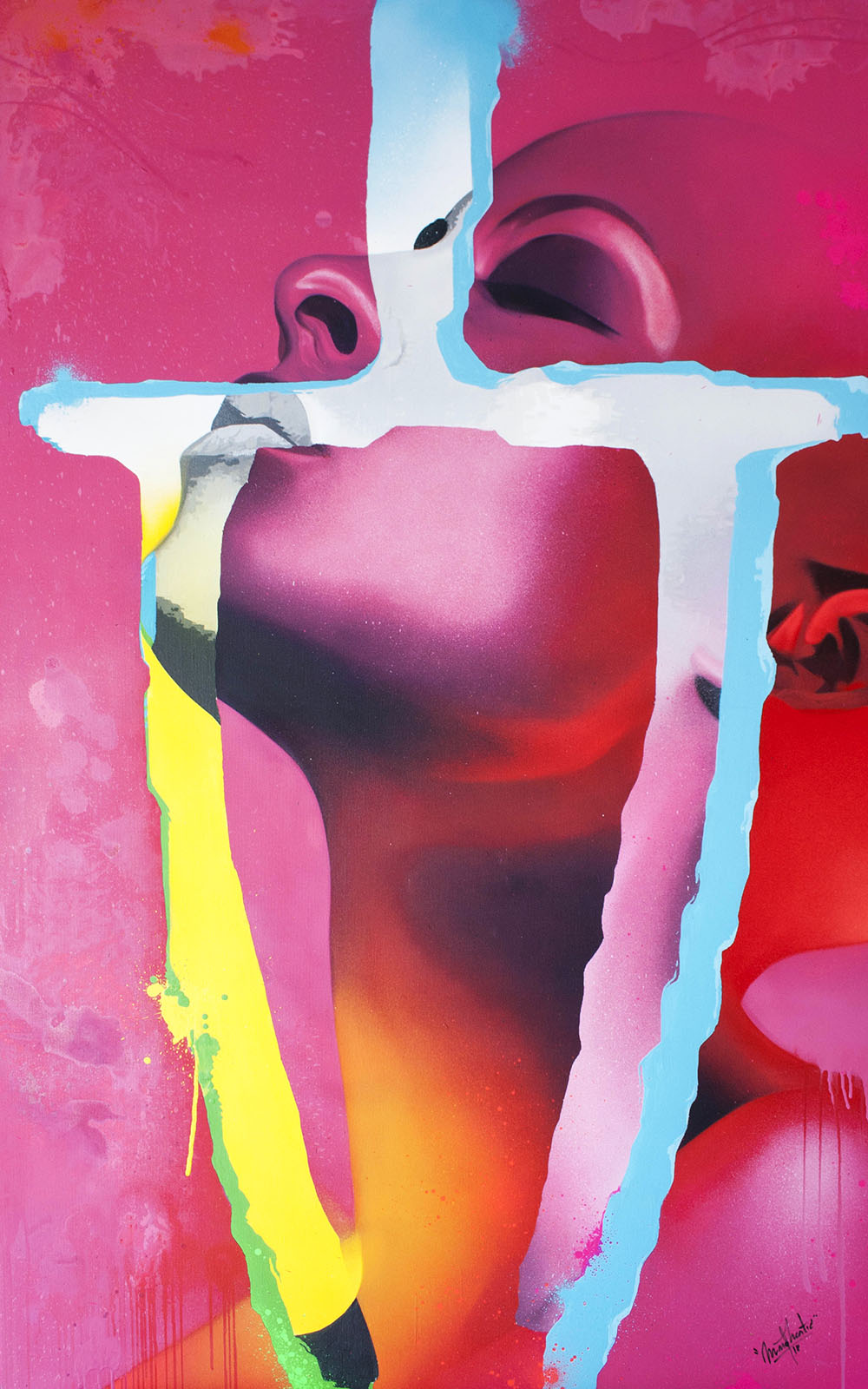
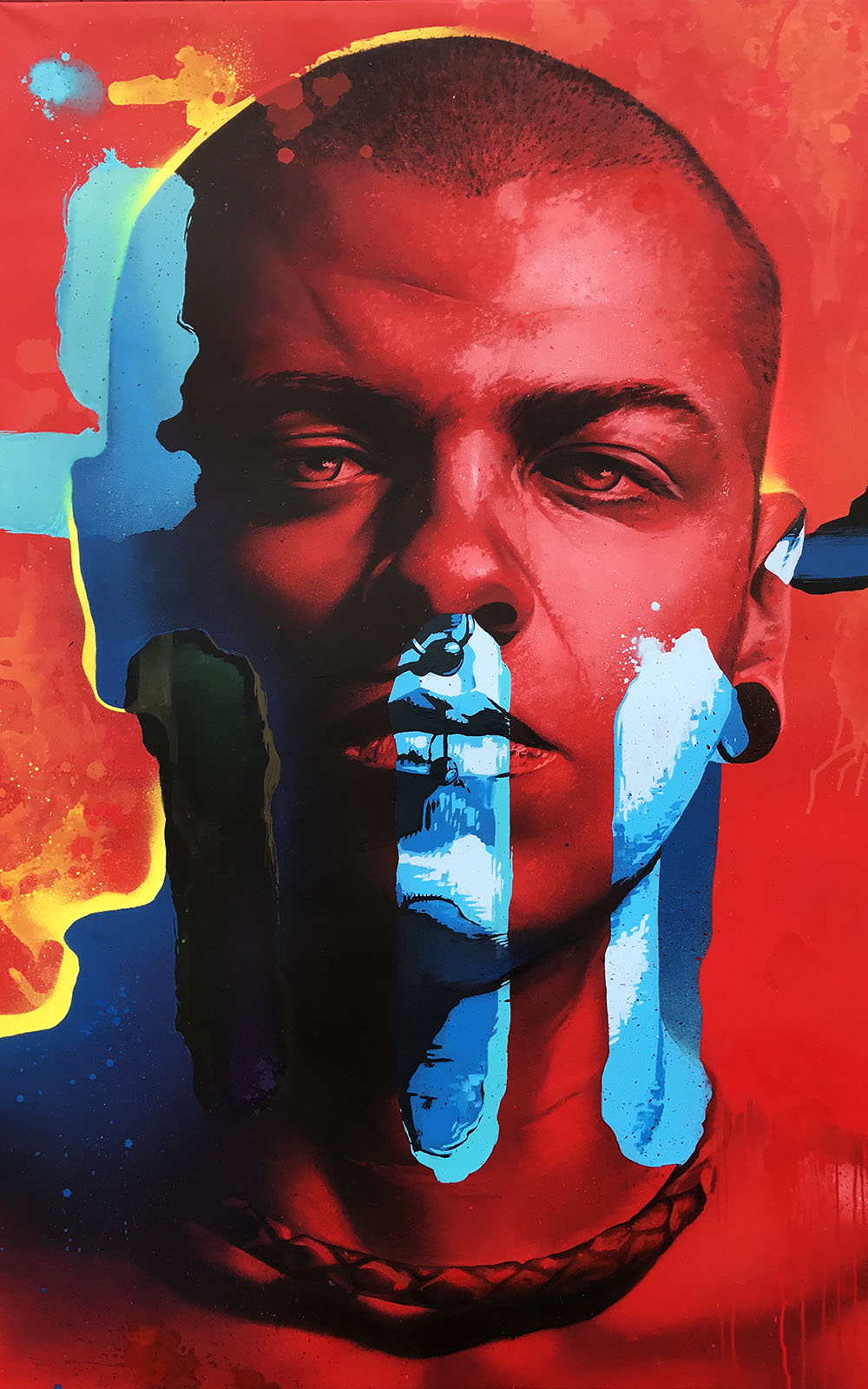
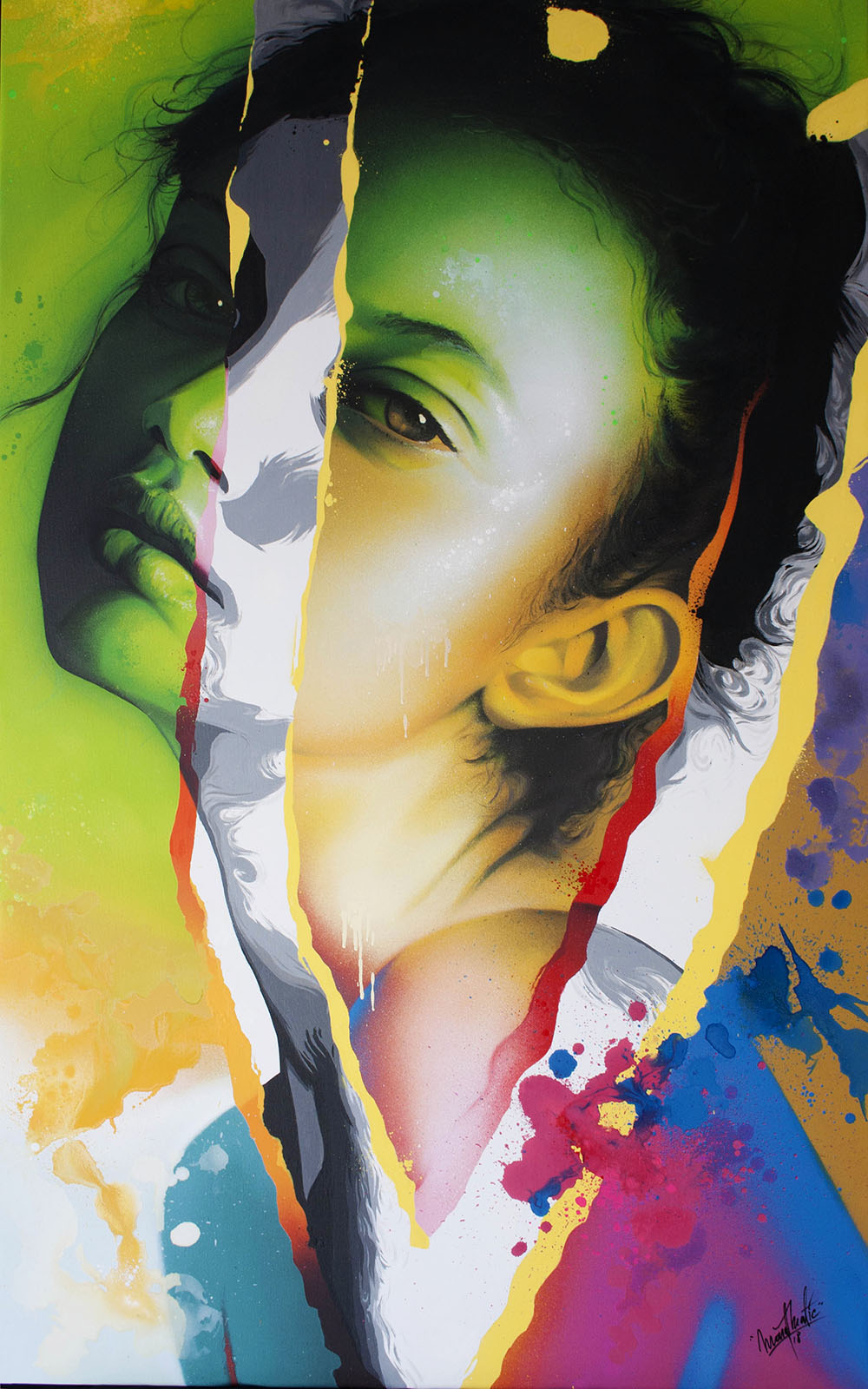
First artistic manifestation
We have to assume that these same concerns are those that the inhabitants of the V-IV millennium BC possessed. when once they arrive in these territories they decide to settle down and build new architectures, starting what we know as ‘megalithism’, large architectural ensembles to which they endow what is considered the first artistic manifestations, paintings and engravings. These megalithic constructions have been studied for many years, particularly since the 80s, and especially in recent years thanks to the technological innovations that facilitated the completion of more thorough and precise studies. In the case at hand, the Dolmen de Soto, the Junta de Andalucía led to an in-depth study on the megalithic art of the peninsular South Atlantic whose results were published this 2019 and reveal that this site is one of the most important at the pictorial level of southern Europe, being so far one of the most documented cases of European dolmen sets.
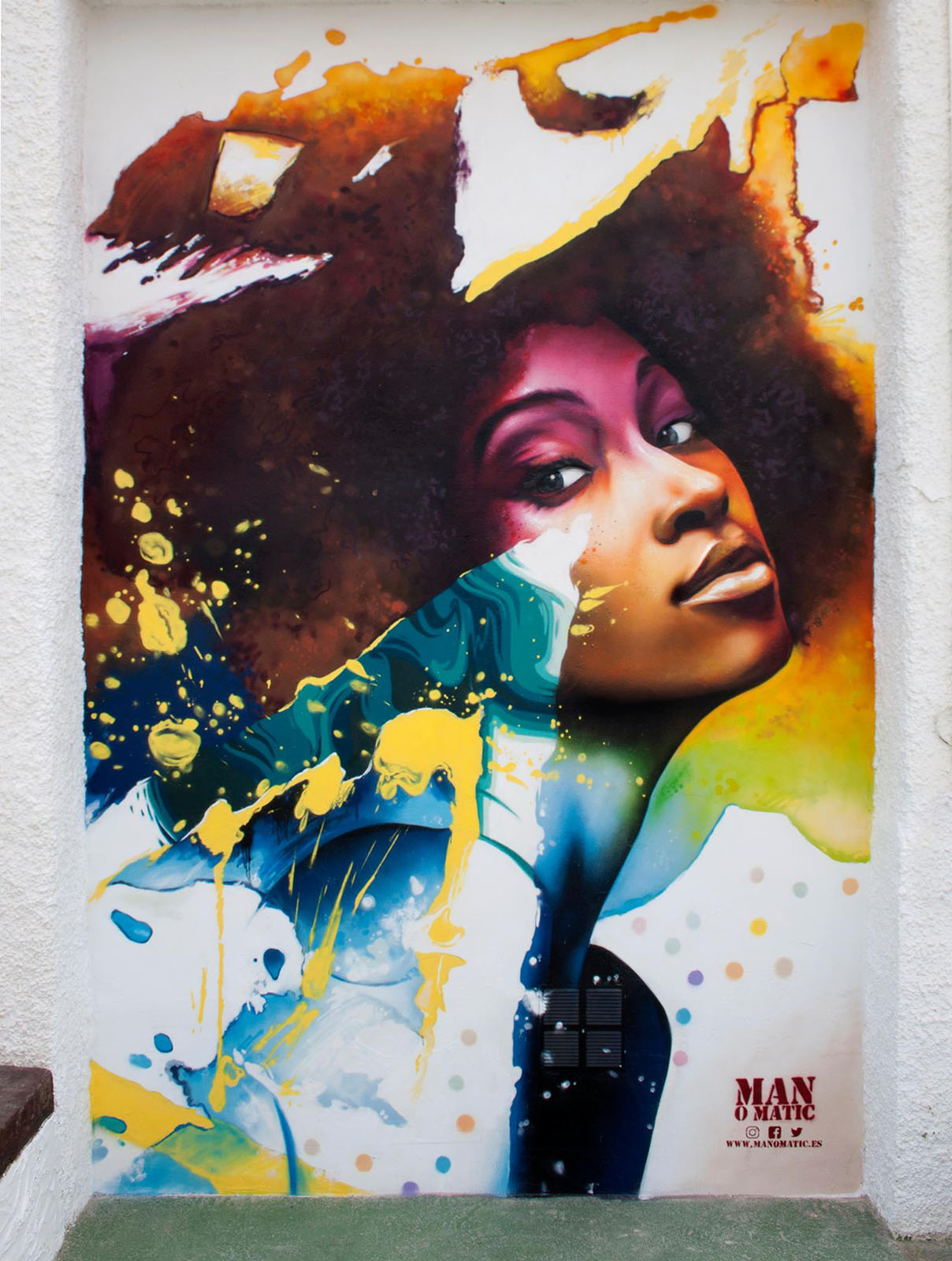
Ancient paintings and low reliefs
After this look at the past, MANOMATIC feels overwhelmed when contemplating these first ancient paintings, but also when verifying the capacity of these ancient settlers to make such constructions and such magnificent artistic representations. The ancient paintings found on the ‘Ortostatos’, large stone blocks placed vertically forming the walls of the funerary monument, have a variety of techniques ranging from engravings, low reliefs, paintings that in some cases are made with hairs of animals as a brush, the Dolmen de Soto being the most decorated megalithic monument of the Iberian Peninsula. These representations are a specialization of what is known as ‘Schematic Art’, characteristic of this area and painted both within the enclosures where rituals and collective ceremonies were developed as well as in rocky outcrops in the open air.
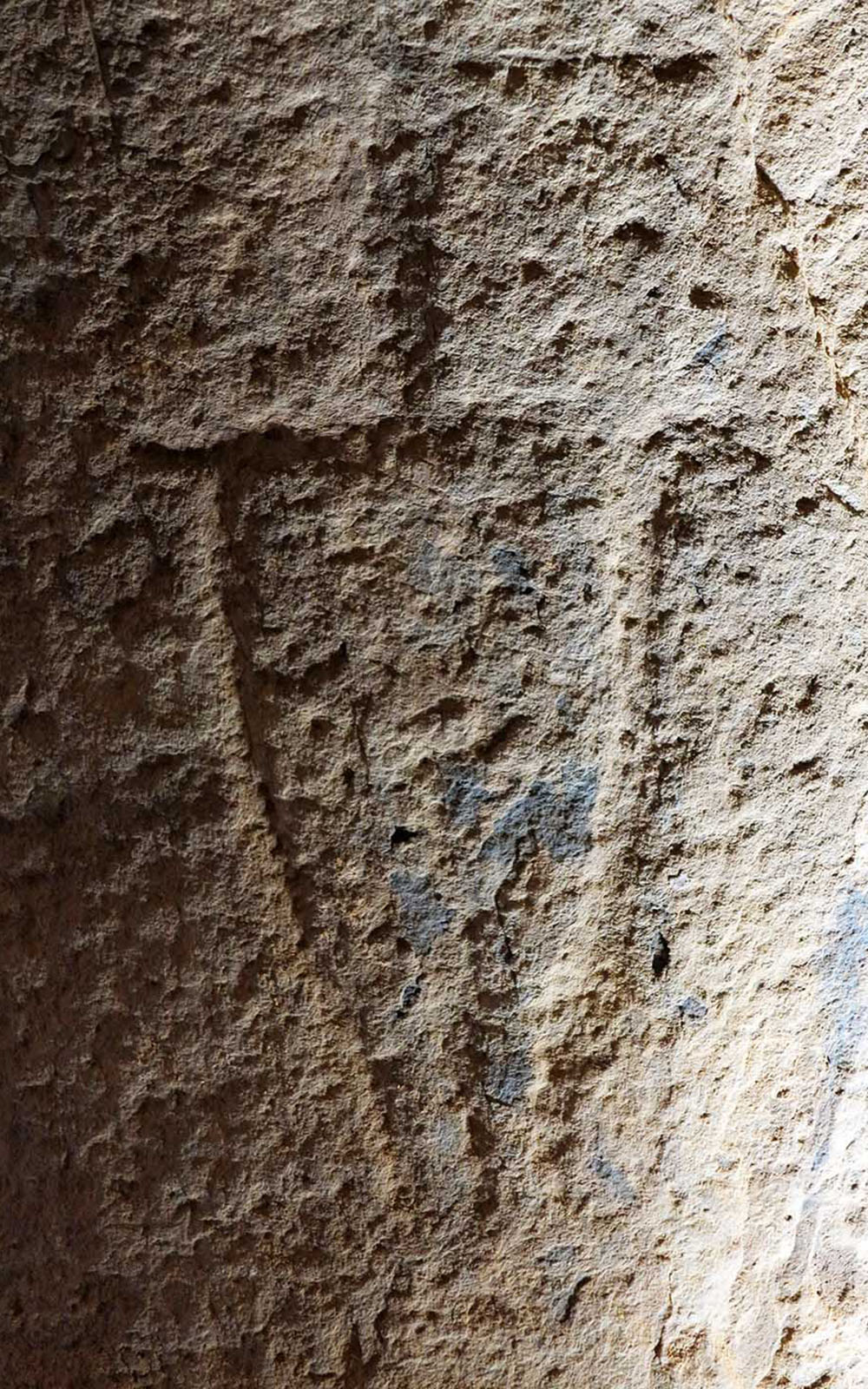
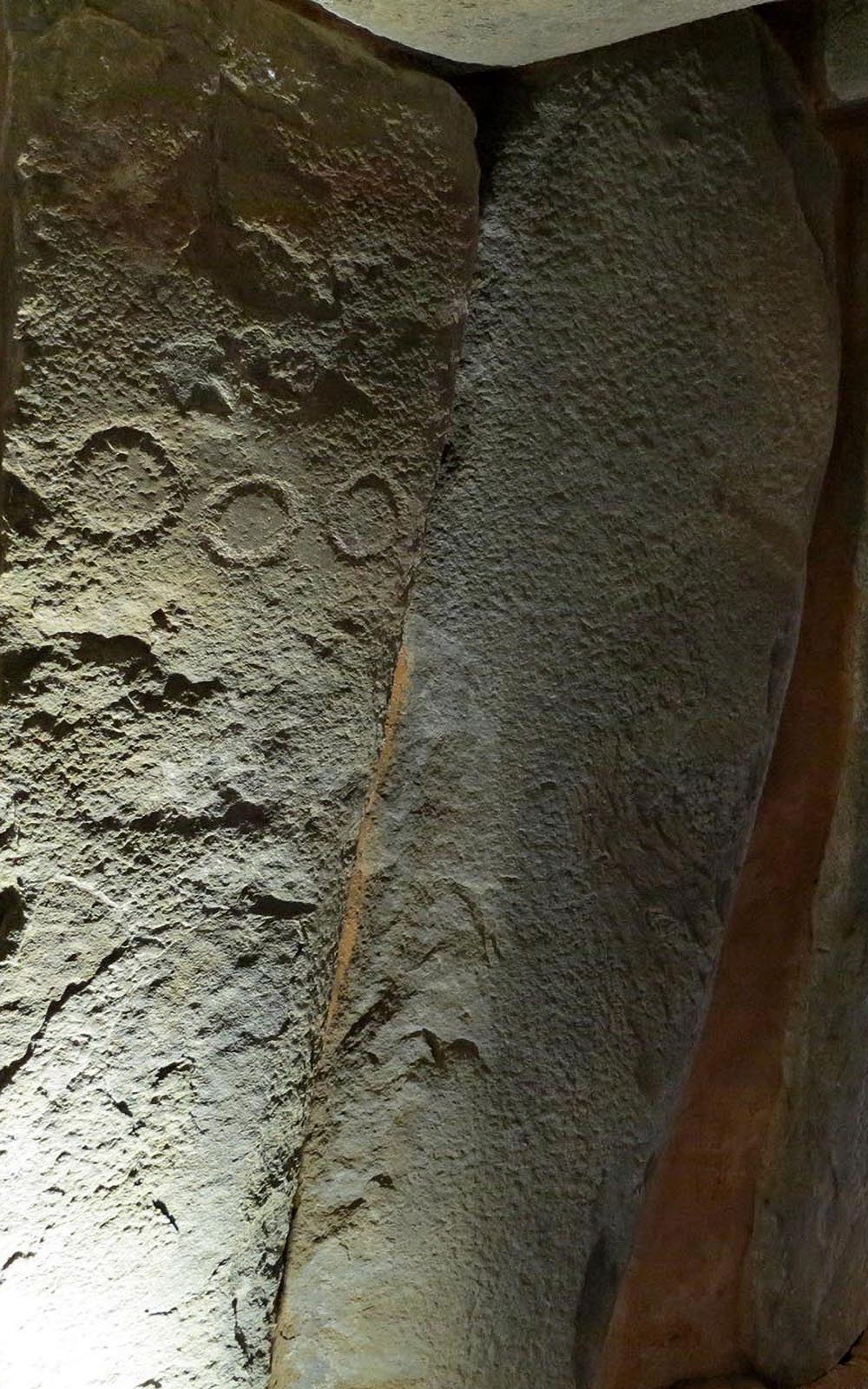
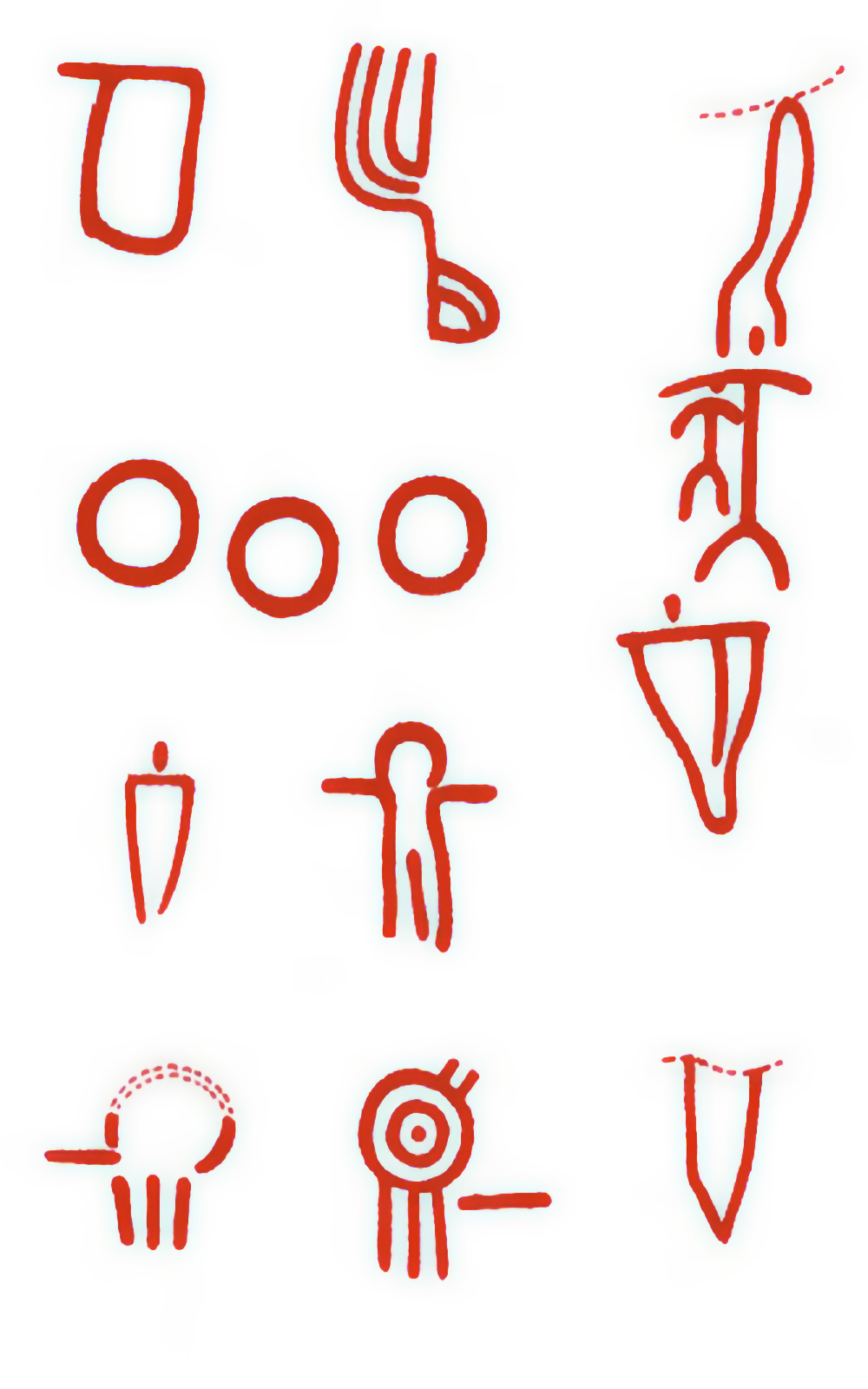
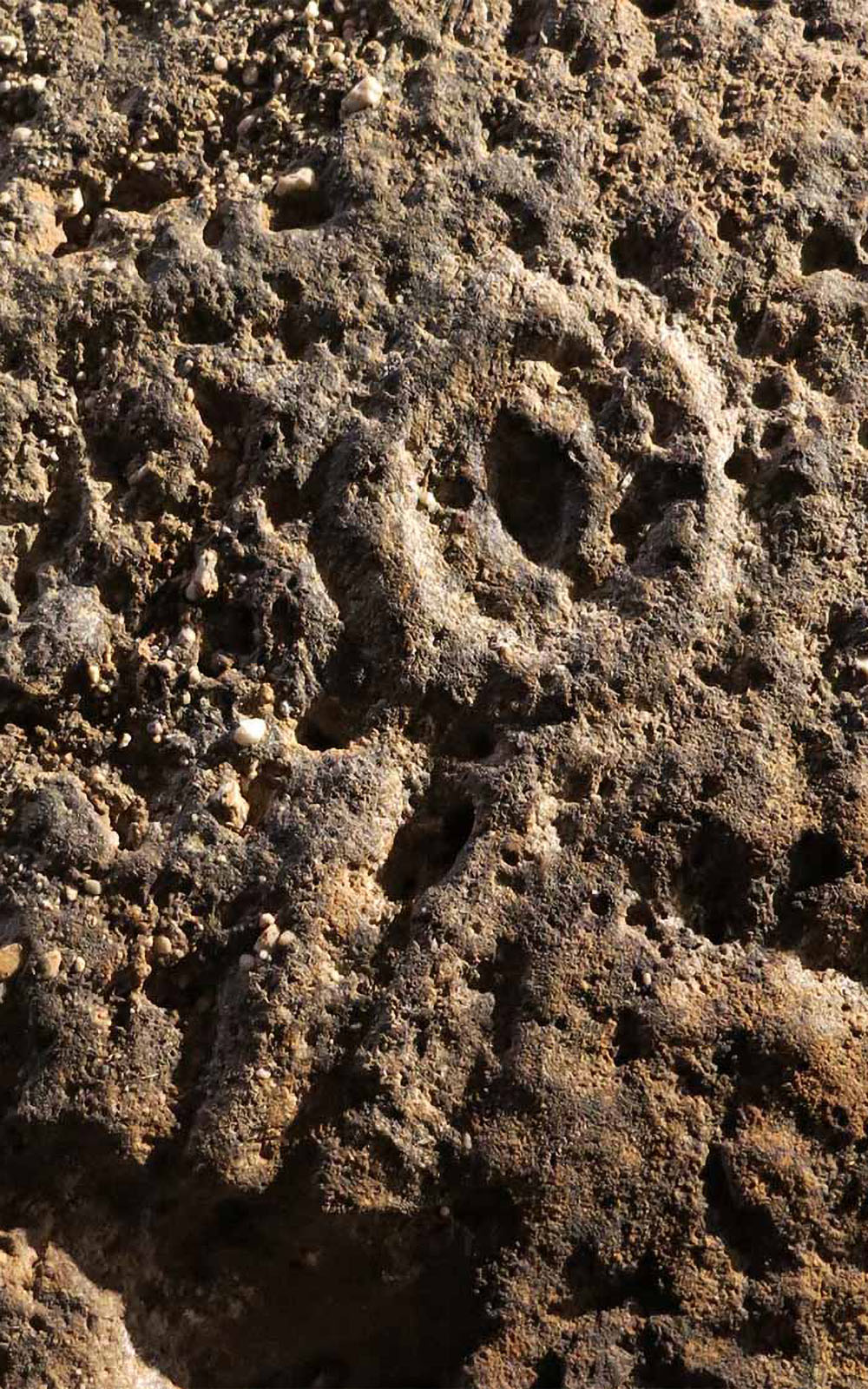
From the article (Spanish): Francisco Javier Torres Goberna
Art about Identity
The themes are geometric figures, strokes, triangles, zigzag, circles or semicircles, cups or idoliform figures, also geometric decorative paintings related to clothing, representation of weapons such as axes and humanized anthropomorphic representations, for which they used the natural volumes of the stones making them narrows in the part of the shoulders and the waist, emphasizing the head. The paint was used to reinforce all these characteristics by mixing artificial pigments with natural white, black and red in the search for the contrast of the shades and textures embodied in the stone supports.
“IDENTITY, ORTOSTATOS” series – painting-on-canvas
Link to the collection (◎0◎)
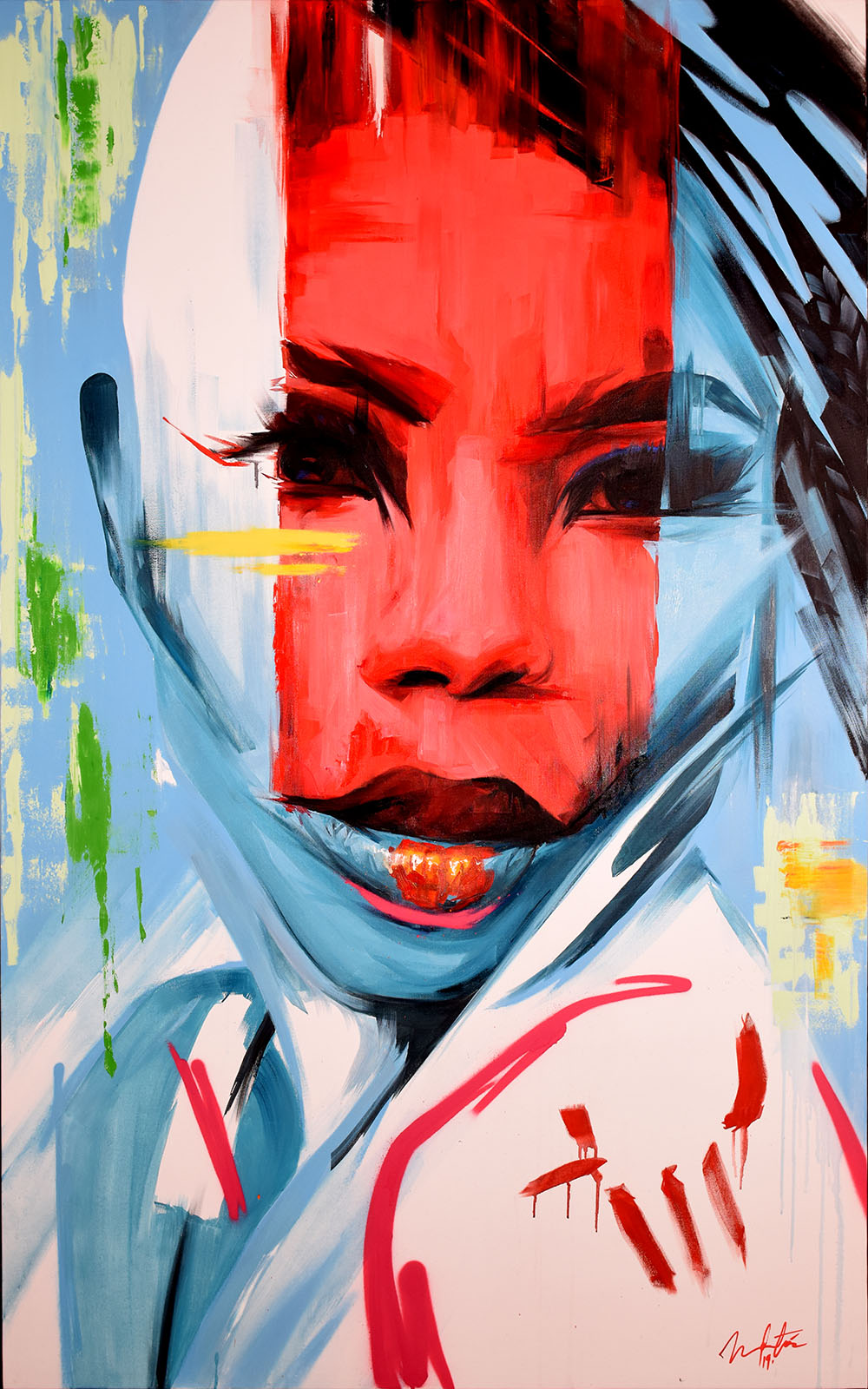
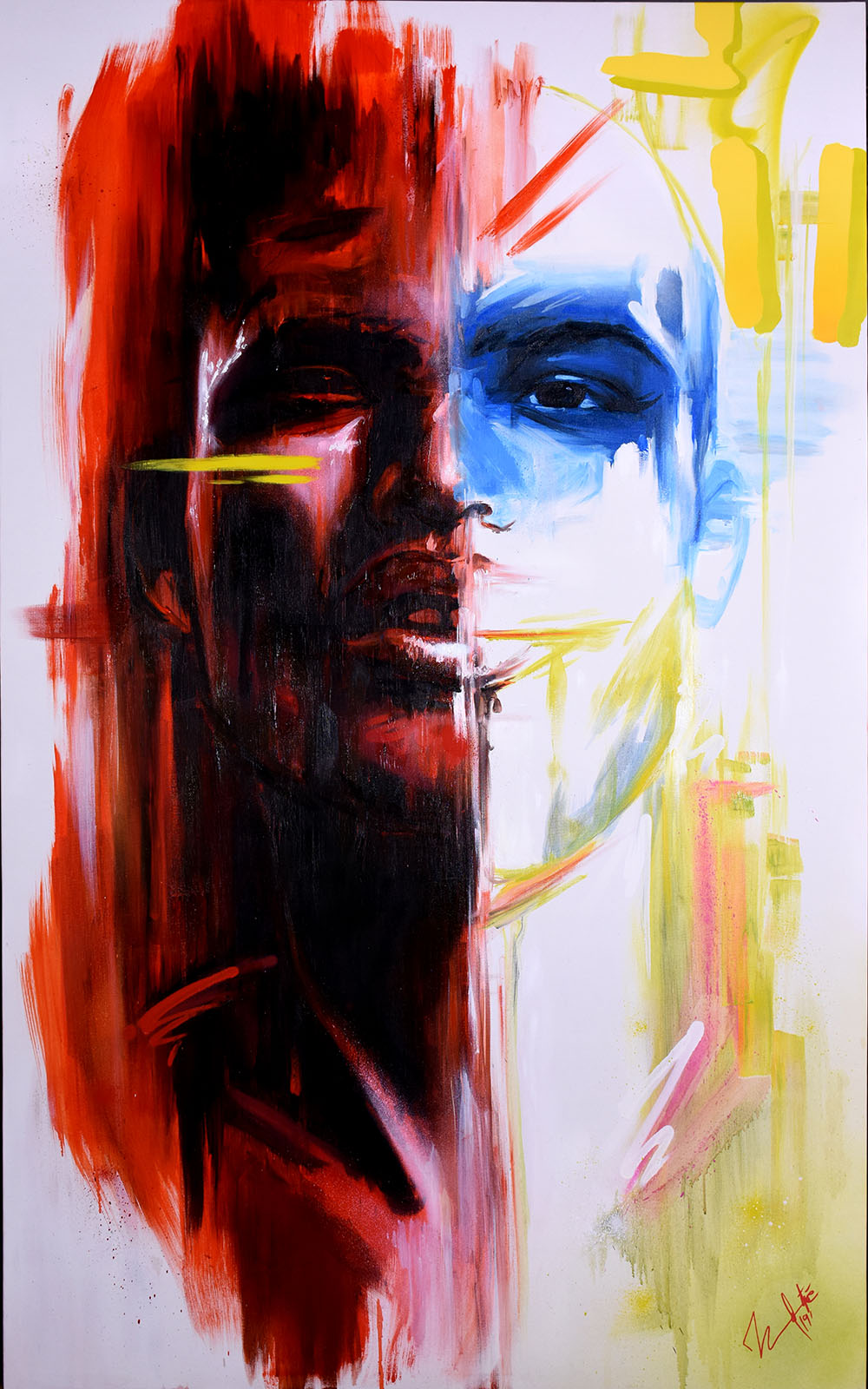
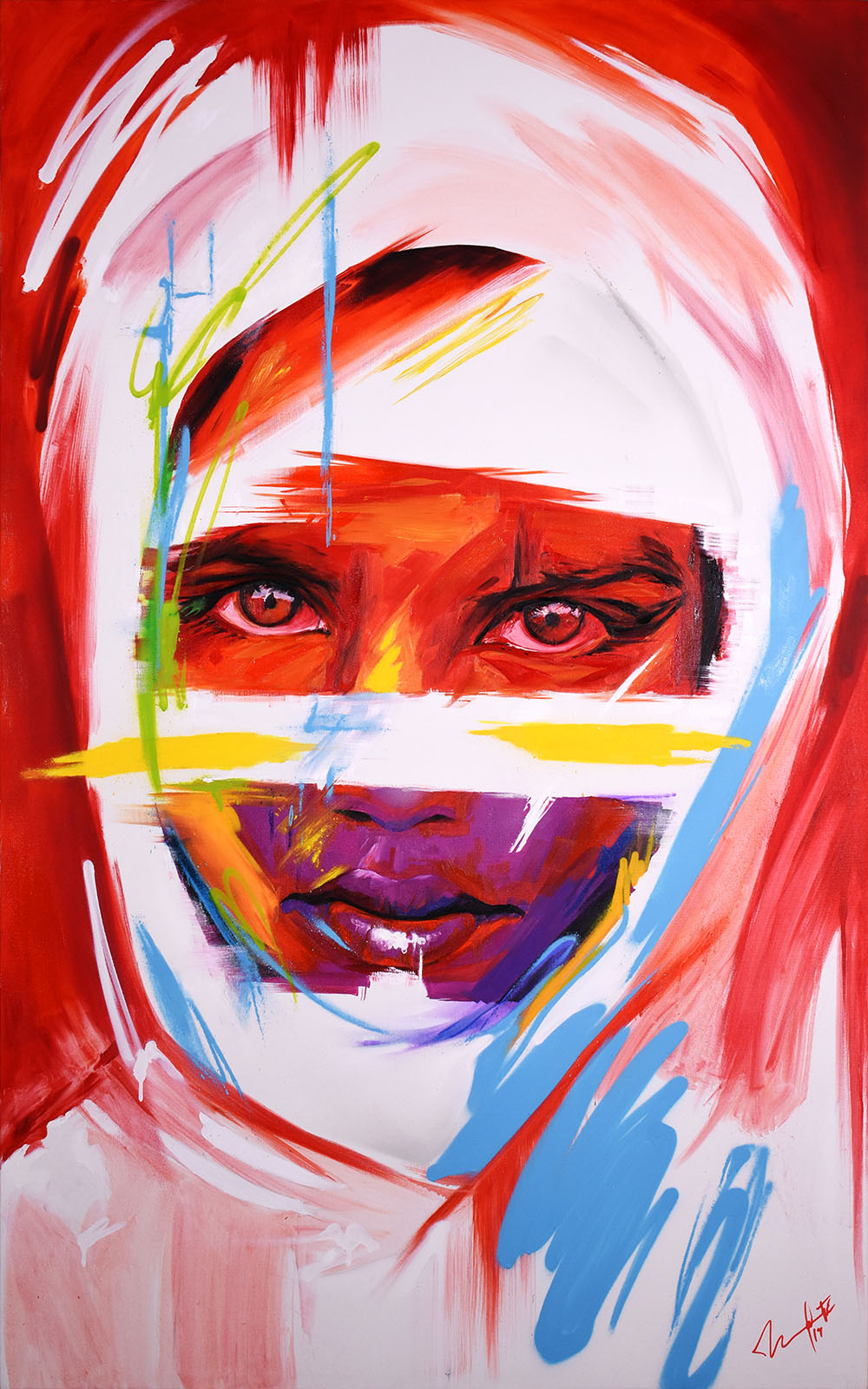
Memories
Decorations and sculptural representations will be elements created to perpetuate the genealogical memory of its inhabitants, also perpetuating art as a legacy for new generations. It is clear that they had a social organization and art as a means to communicate; The Menhirs, circles or alignment of stones and dolmens are material witnesses together with the set of graphic expressions of strong identity character which allows us to approach one of the most important and unique monuments of southern Europe that in turn shares an elaborate globalized culture due to the clear influence of their techniques, morphologies and pigments that they share with other locations in the northern peninsular Atlantic zone.
Character portraits
It is with all this baggage that MANOMATIC creates from its own imagination a set of portraits with faces of very diverse characters, of great color, interspersing the identity symbols of these settlers, women and men who played a role within these societies and that they were able, through their art and their creations, to tell us about their rituals, their links, their lives, the way they understood themselves, their way of thinking, their crafts, their architecture and their art as part of a Wonderful and complex social and cultural identity.
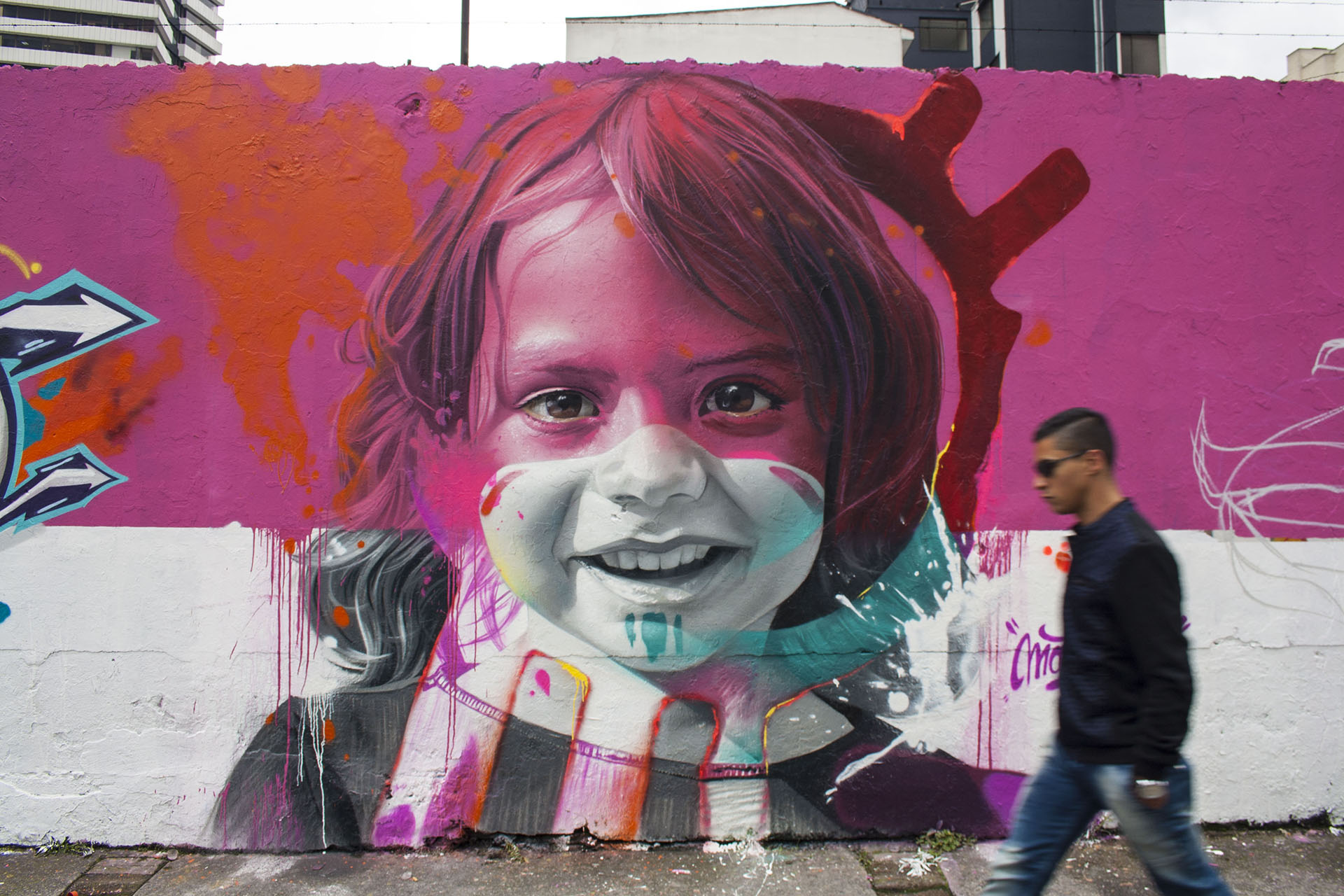
SHARE Art about Identity ON:


